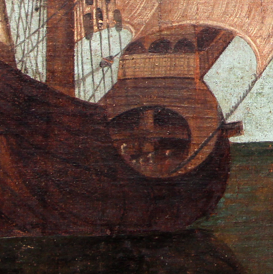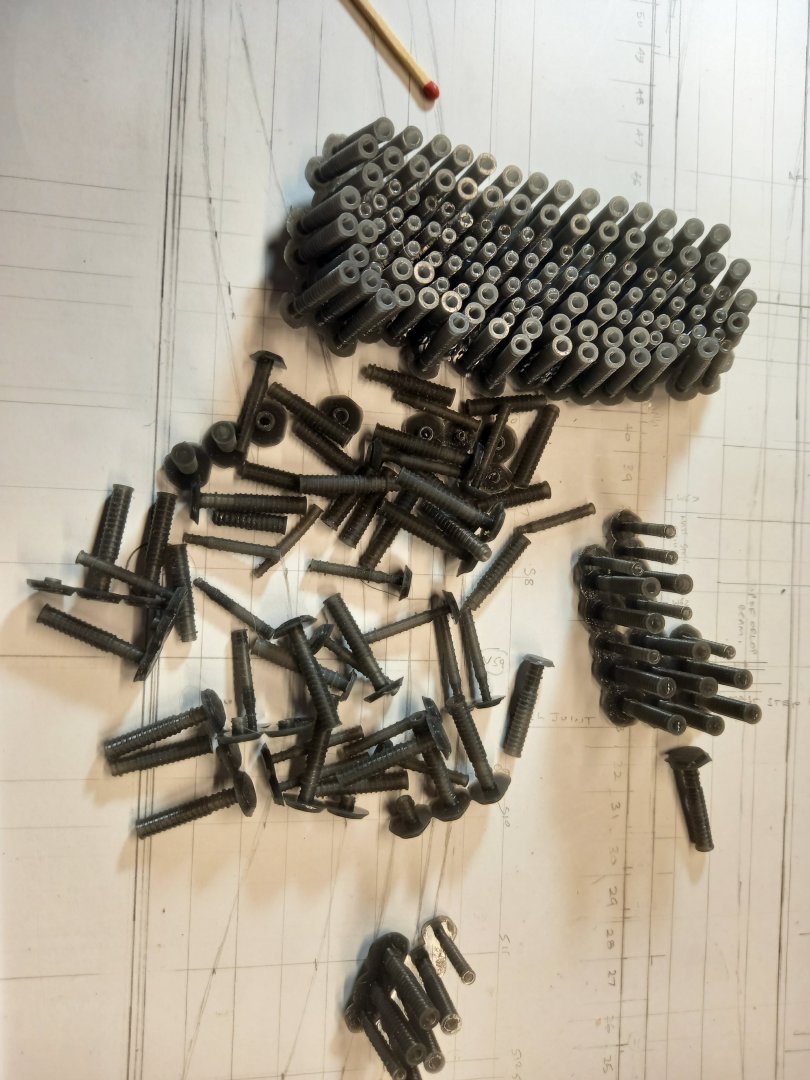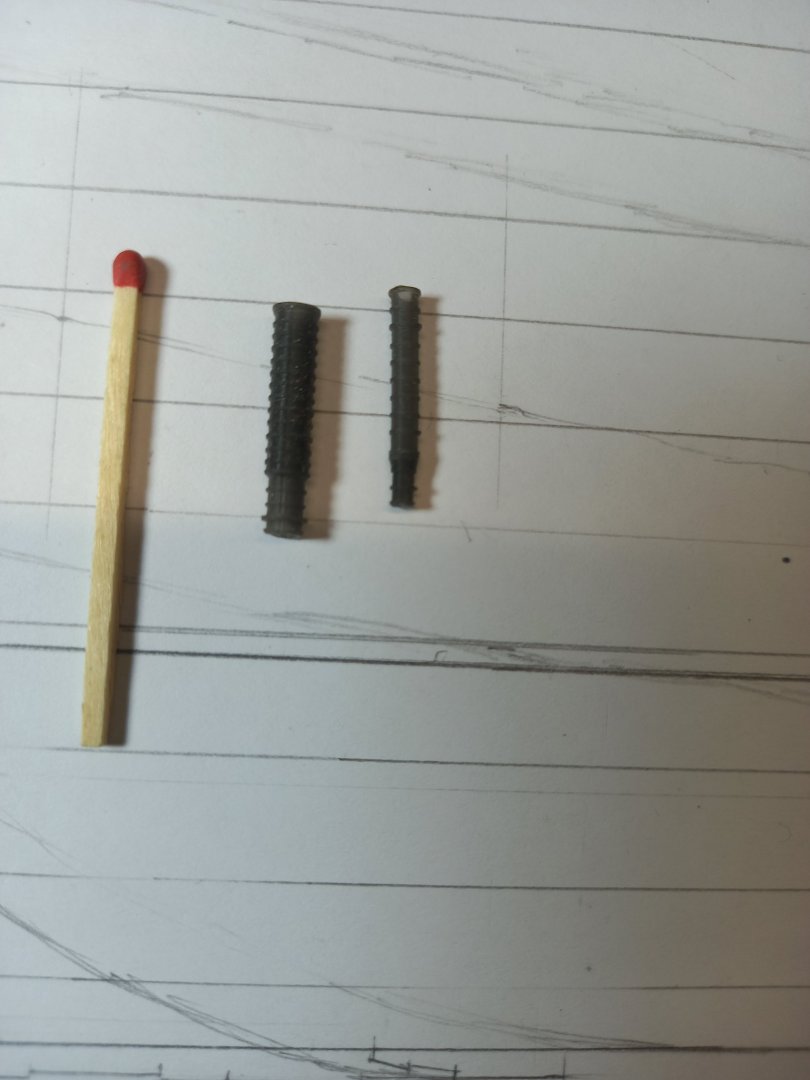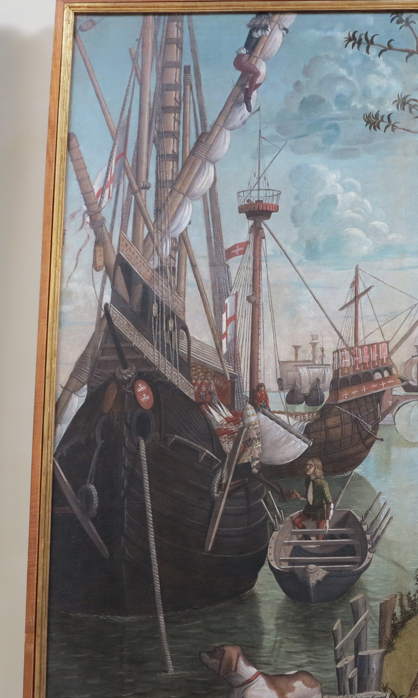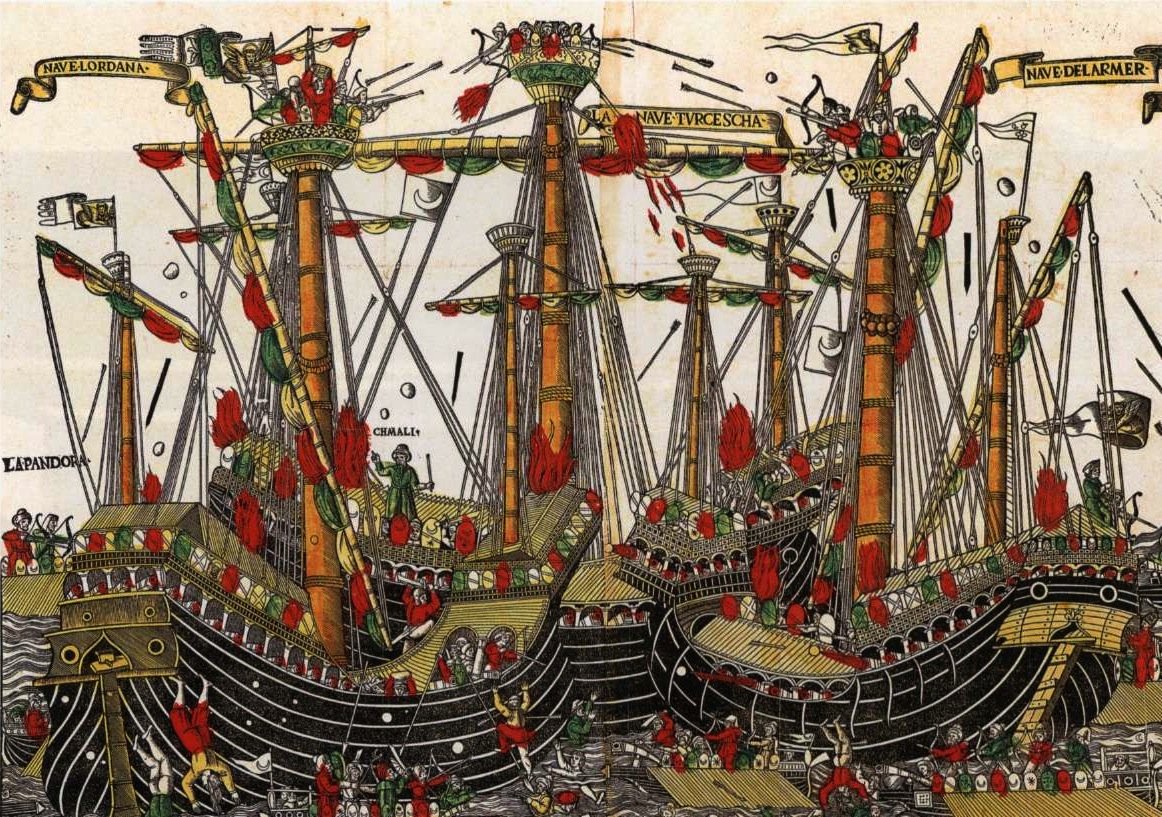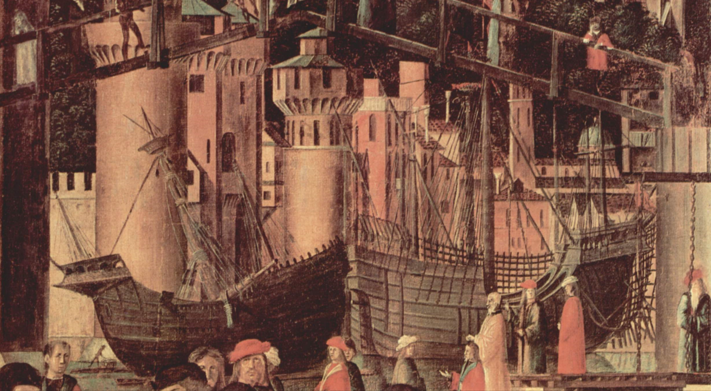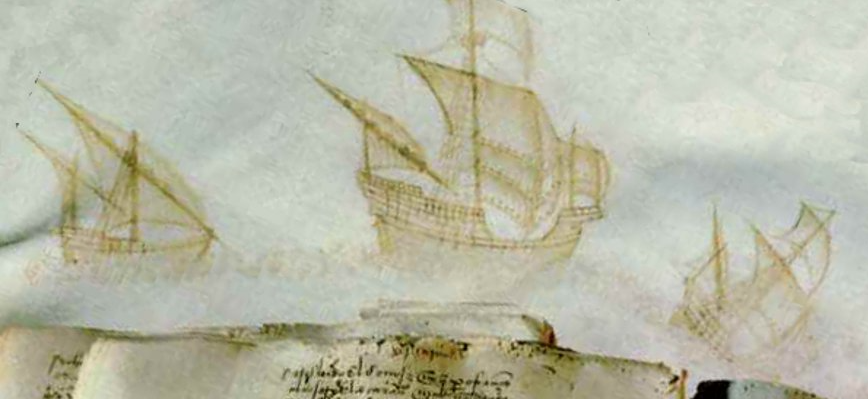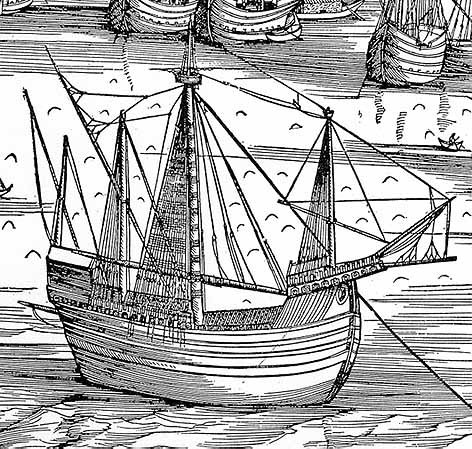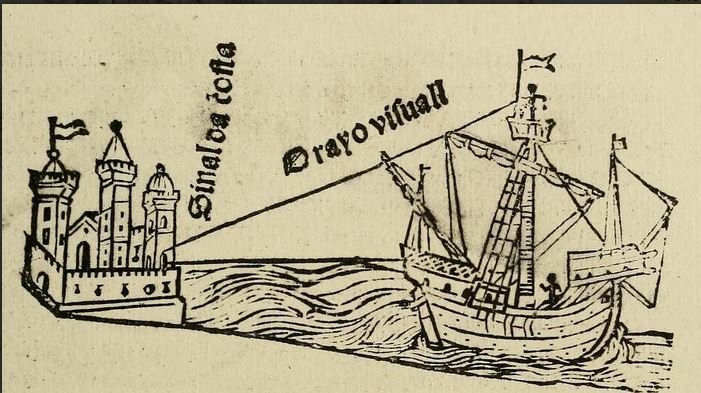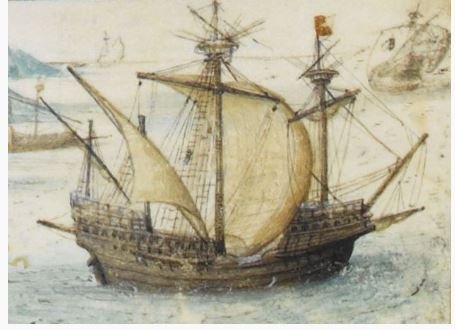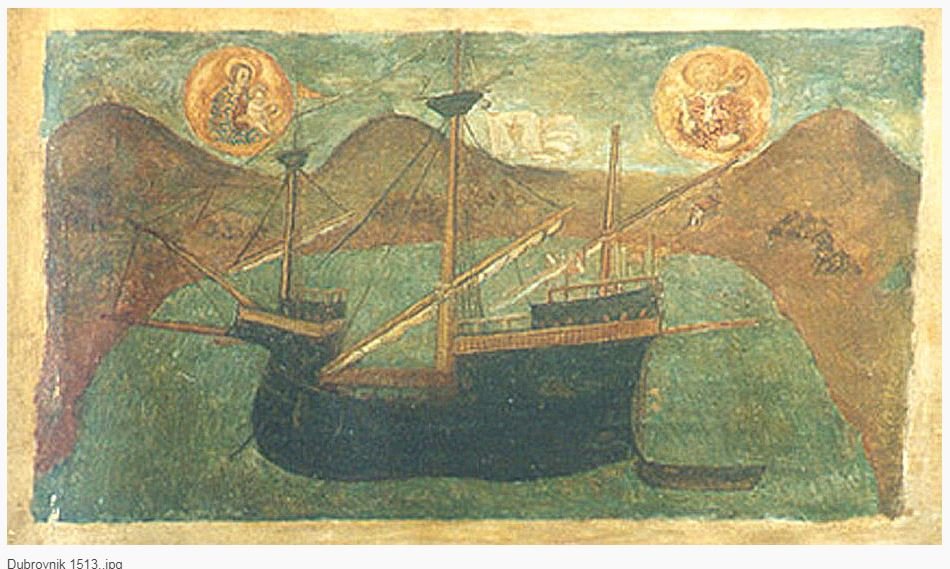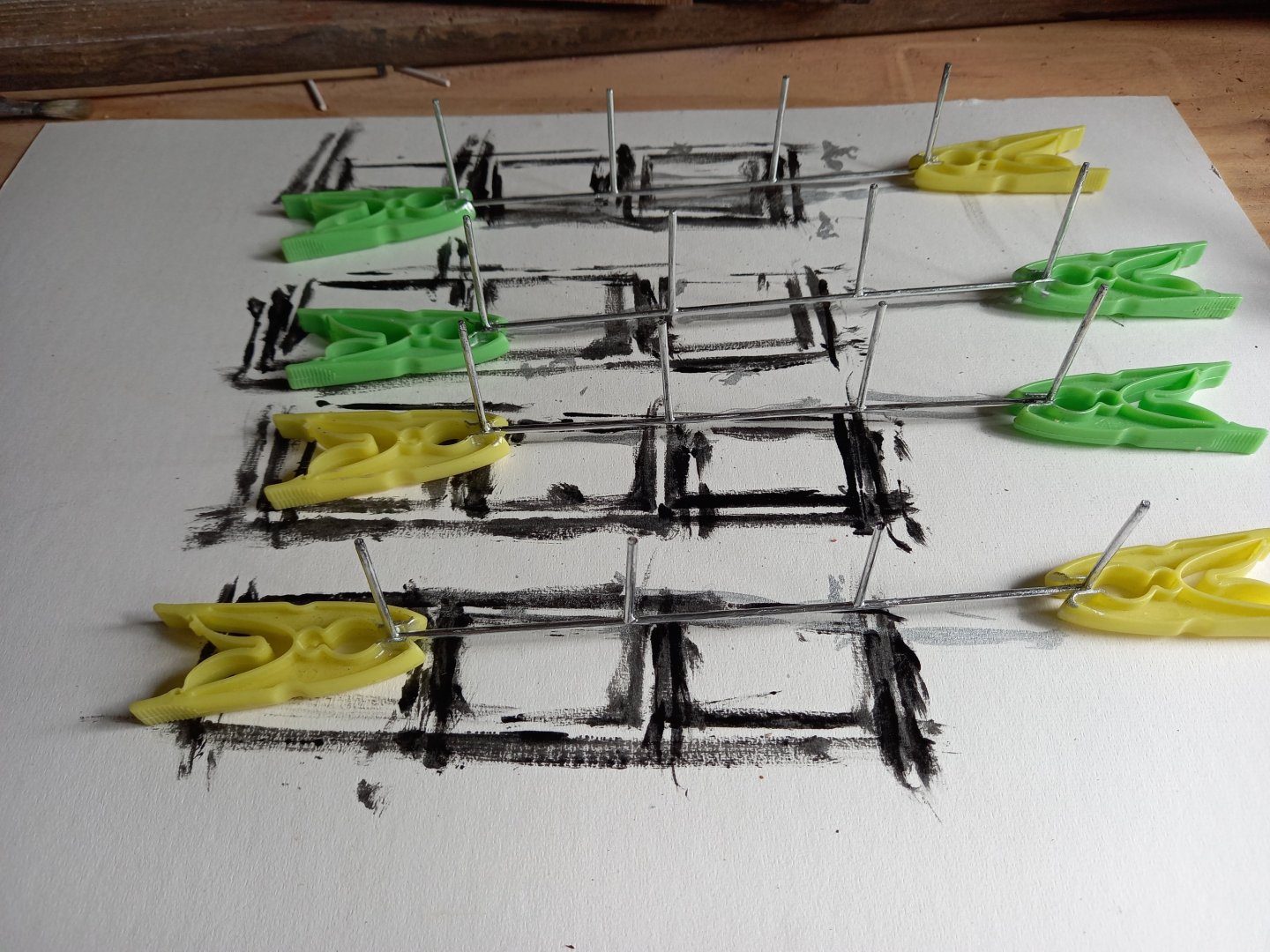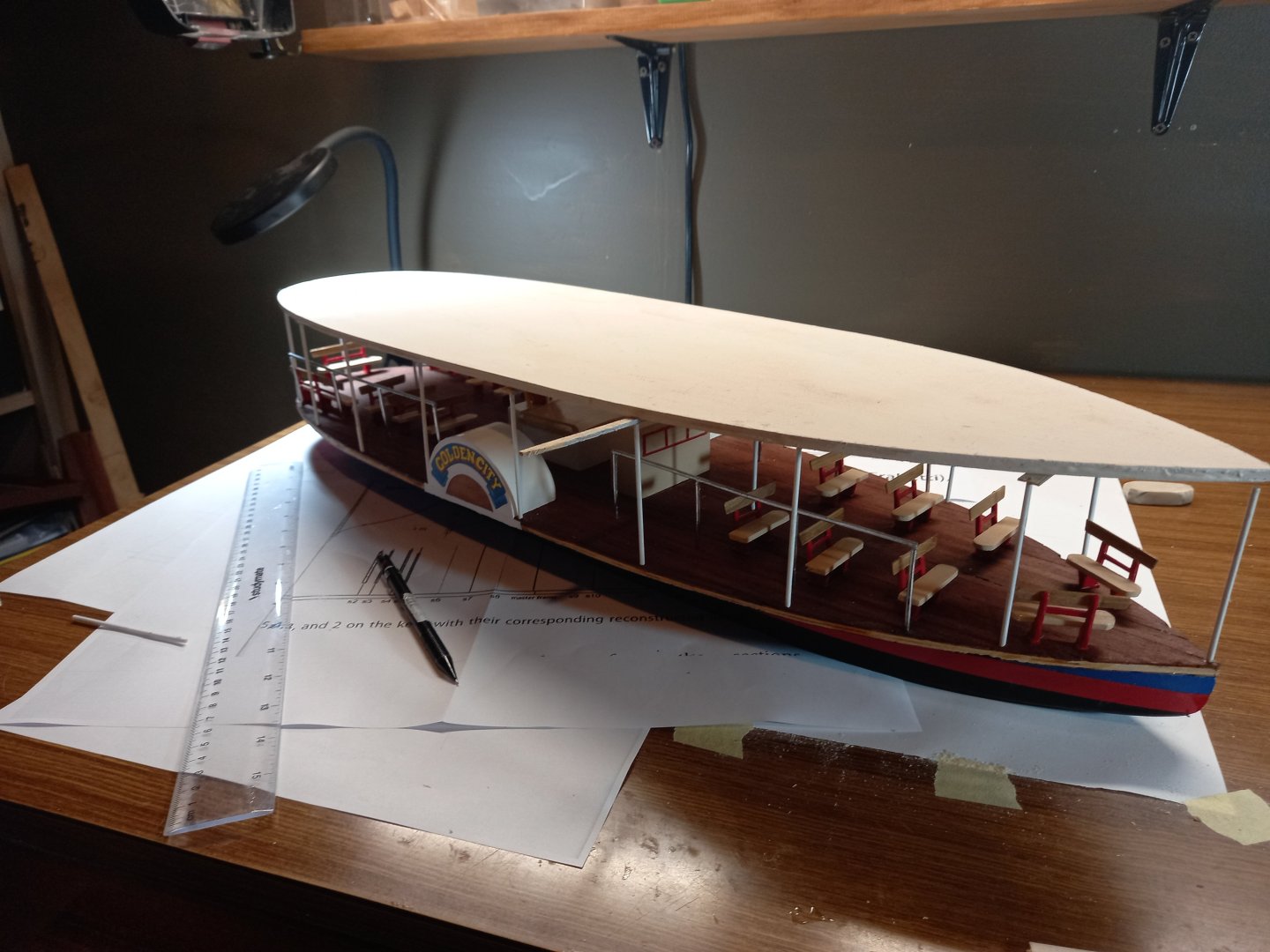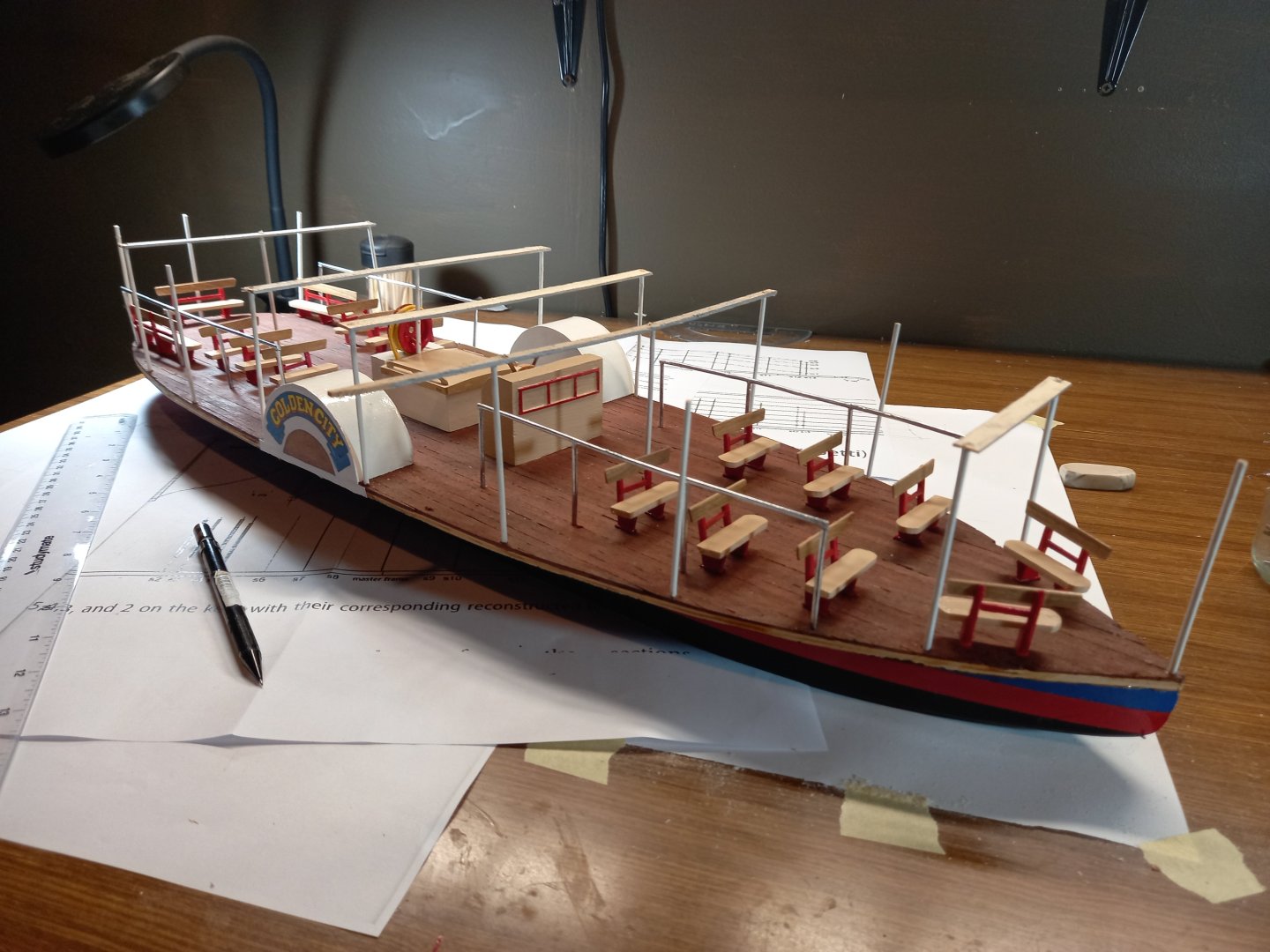-
Posts
7,987 -
Joined
-
Last visited
Content Type
Profiles
Forums
Gallery
Events
Everything posted by Louie da fly
-
Are you making the Occre kit? If so, I've just come across a site https://occre.com/en-au/products/apostol-felipe#:~:text=The Apóstol Felipe was one,"Race for the Indies". that dates its first voyage at 1629, which would change a lot of its detail. The picture above looks more appropriate to 1629, though I think perhaps the stern galleries might have had roofs by that time. I doubt that there is any reliable information as to exactly how the original ship looked - it's more likely that the manufacturer has provided a kit of a "typical ship of this type and date". Oh, and by that date, "gold" paint was considerably more common in decorating big and important (usually royal) ships. Steven
-
More research - this time for the width of the forecastle in relation to the rest of the hull. It narrows quite dramatically between the gunwale and the lower surface of the forecastle. Using 11 examples, I come up with an average narrowing down from full size to about 2/3 (0.667), with a maximum of 0.8 and a lower limit of 0.625. Transferring this to the drawings, I've done more on the lines and the cross-sections. Oh, there were about 12 cannons found on the Lomellina - of two sizes. Some time ago HenrytheStaffy of MSW very kindly 3D printed some for me to go on the model. He might have overdone it a bit with the numbers. But I'm not complaining Steven
-
That depends on where the foremast is stepped. The Anthony Roll picture makes it look like it's right on top off the stempost. And here's a carrack (and Mary Rose was a "super-carrack") with a central beam under the forecastle. But also, quiet a few contemporary pictures of carracks show the foremast offset slightly to one side. For your consideration. Steven
-

Remains of 500 year-old shipwreck: Dated 2019
Louie da fly replied to Allegheny's topic in Nautical/Naval History
Nowadays there's a move to leaving wrecks where they are - often it preserves them better than raising them (and you don't have all the hassle of keeping them from deteriorating, apart from the expense of providing somewhere to display it, staff to look after it etc). They're still working on the preservation of the Vasa and the Mary Rose, as well as others less well known. The archaeologists record everything possible, publish the reports (usually years later) and leave it at that - and of course archaeology and preservation methods keep advancing, so who knows what they'll be doing - better - in the future? Yes, the Gribshunden was a royal vessel, but the Okänt Skepp appears to be a merchant ship. Steven -
That's right. That's what they mean by 'spiling' - planks are very far from being simple long thin rectangles. They curve, they get narrower and wider, to follow the complex 3D curves of the hull. Then there are 'stealers' (short added planks where the hull widens near the ends) and 'drop planks' where three planks become two as the hull narrows. Never have a plank come to a sharp point at the end. It would be impossible to nail it to the frame. Have a look at the planking tutorials to see how this is done. I've planked 4 models so far and I still regard myself as a newbie on planking. But practice improves your technique, and don't be afraid to pull planks off and start again if you're not satisfied. It's out of your comfort zone to start with, but bit by bit you'll get on top of it. And In the real world they didn't have a single plank run the whole length of the ship - there'd be several that made up a single 'run' of planking, joined over the top of the frames behind them (each plank overlapping half the frame) and the joins were 'offset' from one run of planks to the next so all the joins didn't line up causing weakness in the planking. Steven
-
Welcome, Nick! I'm awestruck by your model. Colours, like so many other details, are always 'educated guesswork' based on what (often sparse) information is available. Do the best you can, and you can be sure no-one will be in a position to tell you you're wrong. I'm in Oz but I was privileged to be in the UK in 1972 (or 73?) when Sunderland won the FA Cup from the 2nd Division. Very cool. Steven
-

Greetings from a clueless Patrick O'Brian fan
Louie da fly replied to Galkar's topic in New member Introductions
Greetings from another Aubrey/Maturin fan. I have the whole series and currently re-reading for the umpteenth time. I love his humour and the relationship between Stephen and Jack, and of course the maritime stuff. Have fun with the dory, and make sure you start a build log. It's a great way to get help and advice, and if there's anything you don't understand or want help with, don't be afraid to ask. You WILL make mistakes - we all do - but that's part of the learning process. As you get more experience, your mistakes just get more interesting 😁 Steven -
Welcome aboard. Do you have any ideas about what kind of ship you want to build? I'd strongly suggest you start a build log when you begin. It's the best way to get help and advice as you progress with your build. The members here are unfailingly helpful and friendly. And remember there are no stupid questions - feel free to ask anything you want to know. Steven
-
I am of the opinion that 'gold' would usually have been faked with yellow paint. And though there was a lot of 'gold' decoration on important naval ships in the 17th century I've never heard of it being used in the 16th - they seem to have used bright colours toward the end of the century but I think your kit manufacturer has had a rush of blood to the brain, and that they just made it up because they thought it would look 'cool'. I think you'd be far more correct to forget the gold. If you want to, use yellow paint, but as far as I'm aware gold has no historical justification for a model from this time. Steven
-
Ferrus, if you mean sources for mast heights, the ones I ended up using (leaving out the ones that were too far outside the average) were as follows: from Barbari's panorama of Venice c. 1500 From a Munich guide to navigation (I think) 1509 1530-1534 Carrack from Leaves from the Genealogy of the Royal Houses of Spain and Portugal - the Portuguese Genealogy From an illustration for which I only have the notation "Dubrovnki 1513" Detail from one of Carpaccio's St Ursula Legend paintings c. 1490. From an early 16th century map of Hispaniola. The "Ship of the Church, Polish 15th century. There were, as I mentioned, others which were either too much bigger or smaller than the average (from 0.67 up to 1.07) and though they may well be valid, I decided to stay within the mid-range - about 0.80 to 0.87 - as being more reliable. Steven
-
Dick, yes indeed. It seems to be very common in contemporary representations. I see it not only in Carpaccio but quite a few other renditions. Around the turn of the 16th century one starts to see a double arch instead of the single one (e.g. Battle of Zonchio), but I don't like that as much. I've been doing some more 'pictorial research' for the height of the mainmast (which was not found in the wreck). Taking into account 15 contemporary images, allowing for variations between individual ships, and even more for artistic license, and discarding figures too far outside the average, the ratio of the height if the mast above the gunwale and the overall length (forward end of stempost to after end of aftercastle) seems to be at about 0.85. With an overall length on this model of about 430mm, that works out to about 390 mm. Then if I add the distance between the gunwale and the upper surface of the keel, we get another 80mm, so mast height up to the top of the crosstrees would be about 470mm. I'm having to do some work in working out frame positions. The archaeological reports use at least 4 systems of location - first there was a grid with 1 metre squares running over the whole site. Then they numbered all the frames that had survived. Plus they had a 'zero' point on one of the planks near the aft end of the wreck that distances were measured from. And the original investigation took cross-sections at various points along the keel. As none of these seem to be referenced very well to each other, I'm busily trying to reconcile them all to a common system. The numbered frames are about 500mm apart (i.e. between the centre of one and the centre of the next adjacent), so I've got a fair idea of where each is in relation to the rest. Then the latest report has given a diagram (with a key showing how big a metre is) showing the locations along the keel of the cross-sections and of the Master Frame, which is frame No. 59 (see diagrams in post #26). So taking Frame 59 as my starting point, and the locations along the keel of the cross-sections, I can (I hope) work out which frames each of the cross-sections is closest to. And then try to work out the lines and fill in the gaps. Unfortunately, the bow and stern have not survived (see picture in my original post), so their shapes are largely a matter of educated guesswork. And the same applies to the upper works. I'm thinking very seriously about taking a page out of Woodrat's book and making a solid half-hull, and basing my frame shapes on that. I have a cunning plan to make this - we'll see how it works out. Note to admin - can I get this log moved from "Up to 1500 AD" to "1501-1750" please? If, as I believe, she was built in 1503, I've put it on the wrong section. Thanks. Steven
-

Remains of 500 year-old shipwreck: Dated 2019
Louie da fly replied to Allegheny's topic in Nautical/Naval History
I wonder when the archaeological reports will start to appear. It'd be nice to know more about this ship. Steven -
Keith, it's an Australian brand, though I'm sure there'd be equivalents elsewhere, and apparently used by automobile modellers. The one I have is SMS brand and is called "hyperchrome", and it's alcohol-based and is to be used with an airbrush, though I just used an ordinary watercolour paintbrush and it worked. The guy who put me onto it said to put down an undercoat of black matt, then another coat of black gloss before applying the chrome (which needs several coats). I didn't ask whether the undercoat was supposed to be acrylic or enamel, so I experimented - enamel is the way to go. Now you know as much about it as I do . Steven
- 110 replies
-
- Paddlewheeler
- Ballarat
-
(and 3 more)
Tagged with:
-
I've left this for awhile, but it's really time I got back to it. I got held up by not knowing how I could duplicate the chrome pipe of the rails that divide passengers from storage areas. Fortunately, a member of my local modelling club put me onto a paint that actually does the trick - not just like yer usual 'silver paint' look, but actual chrome. And this was on bamboo like you get in kitchen skewers, so it's quite an achievement. And I've put in the uprights that hold up the awning, and solved (I hope) the problem of the keeping the awning piece horizontal throughout, avoiding it sliding down the uprights getting all askew. I just glued the uprights, into holes in crosspieces, so the top of each upright (they're all the same length) is flush with the top of the crosspiece. Simple solution, really, and it'll be invisible when the model is complete. Still in progress. And here it is with the awning dry fitted. Steven
- 110 replies
-
- Paddlewheeler
- Ballarat
-
(and 3 more)
Tagged with:
-

Remains of 500 year-old shipwreck: Dated 2019
Louie da fly replied to Allegheny's topic in Nautical/Naval History
Rik, that first link seems to be basically the same article as in the original post. I do like the fact that there's a video. And the ship's boat is quite a find. That and some of the deck furniture (for example the pump) give some idea of the size of the vessel itself. It's now being referred to as Okänt Skepp, but that just means "unknown ship". A good enough name for me. Not much info available on-line about her even now. The Gribshunden, which I mentioned in my first post, has quite a bit more information available. Steven -
Ferrus, no swivel guns were found. The Beat to Quarters Tumblr article gets several things wrong - the guns were never mentioned in the archaeological report as being cargo; in fact they were distributed through the wreck in positions that suggest they were for the ship itself. On the other hand, big cannon wheels were found in the wreck, more appropriate to land-based cannons, and as the ship was under hire to the King of France who was having himself a war in Italy, it's likely these were cargo - and perhaps that the barrels were recovered by a salvage team that tried to recover what was most valuable from the wreck soon after she went down. Regarding the matter of bonaventures, I'm still thinking about it. That a ship could have them because of her size is no guarantee that she did. The great majority of representations show a single mizzen. Steven
-

Remains of 500 year-old shipwreck: Dated 2019
Louie da fly replied to Allegheny's topic in Nautical/Naval History
Unfortunately a few seconds after opening the link it went to NY Times advertising and demanding I log in and let them have access to my personal stuff. Looked interesting up to that point, though. Steven -

Orks Dakka Jet by RGL - FINISHED - Warhammer
Louie da fly replied to RGL's topic in Non-ship/categorised builds
Cyberpunk. -

Remains of 500 year-old shipwreck: Dated 2019
Louie da fly replied to Allegheny's topic in Nautical/Naval History
I originally thought this was the Gribshunden, a Danish royal ship, but apparently not. See https://sv-m-wikipedia-org.translate.goog/wiki/Okänt_skepp_från_1500-talet_i_Östersjön?_x_tr_sl=sv&_x_tr_tl=en&_x_tr_hl=en&_x_tr_pto=sc Interesting in its own right! I hadn't heard of this one before. I've bookmarked it. Thanks for posting. Steven
About us
Modelshipworld - Advancing Ship Modeling through Research
SSL Secured
Your security is important for us so this Website is SSL-Secured
NRG Mailing Address
Nautical Research Guild
237 South Lincoln Street
Westmont IL, 60559-1917
Model Ship World ® and the MSW logo are Registered Trademarks, and belong to the Nautical Research Guild (United States Patent and Trademark Office: No. 6,929,264 & No. 6,929,274, registered Dec. 20, 2022)
Helpful Links
About the NRG
If you enjoy building ship models that are historically accurate as well as beautiful, then The Nautical Research Guild (NRG) is just right for you.
The Guild is a non-profit educational organization whose mission is to “Advance Ship Modeling Through Research”. We provide support to our members in their efforts to raise the quality of their model ships.
The Nautical Research Guild has published our world-renowned quarterly magazine, The Nautical Research Journal, since 1955. The pages of the Journal are full of articles by accomplished ship modelers who show you how they create those exquisite details on their models, and by maritime historians who show you the correct details to build. The Journal is available in both print and digital editions. Go to the NRG web site (www.thenrg.org) to download a complimentary digital copy of the Journal. The NRG also publishes plan sets, books and compilations of back issues of the Journal and the former Ships in Scale and Model Ship Builder magazines.



